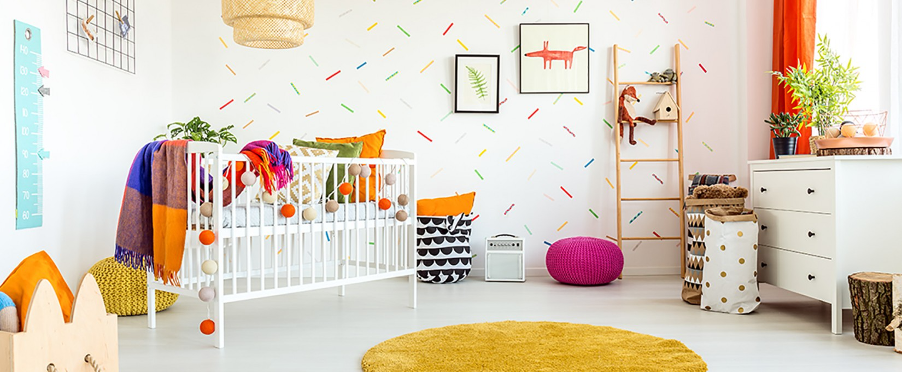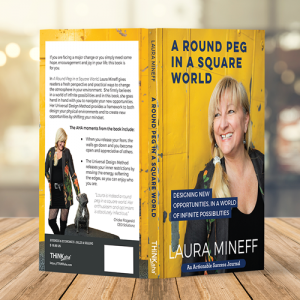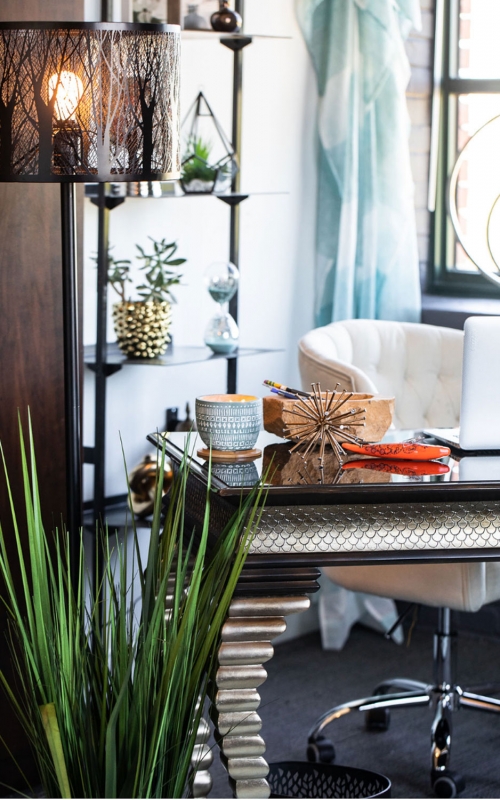- kids bedroom colorfully deisgned
USING THE UNIVERSAL DESIGN METHOD IN THE KIDS ROOM
Let’s talk about Universal Design in the Kids Room. The kids room is the room that’s going to do the most changing over the years in your house. Because of that, this room will need to be the most adjustable since it’s going to cover a large range of age and growth. In other words, I wouldn’t “install” anything in the walls or floor. If they really want a slide going from the bathroom to their bed, they can do that in their own house.
Coloring for the Early Years
The color of paint used on the walls, ceiling and maybe even the floor, is going to be the easiest to change the room. Paint is amazing in that it can really set the tone for kids as they age. That said, you’ll want to use soothing pale primary colors in those early years to create comfort, security and peacefulness. This will help with their self-confidence of being alone and lets you get some more sleep, which is priceless!
Bedding & Window Treatments
Along those same lines of peacefulness, you’ll want to keep the patterns of the bedding and window coverings simple. Too much stimulation, even if the kiddos are cocooning themselves in the blanket and not necessarily looking at it, can still result in unrest and feeling unsettled.
Getting Older
Once your kids begin school and activities that require them to get out of bed and motivate, you’ll want to start incorporating brighter colors and patterns. Not too much, just key places like stuffed animals and play toys, bedding, and area rugs for example. Keep in mind that as you add elements make sure you use all of the different shapes.
A quick guide on shapes:
squares/rectangles = strong, secure, sense of order.
Circles = creative, freedom, comfort.
Triangles/pyramids = organization, routine.
Accessories
Throughout all ages this room represents the independent safe place for your kids to be themselves, so don’t be afraid to hang familiar, fun, admiring posters and memorabilia. You can also include awards or good memories of friends and activities. Memory boards are a great way to keep these parts of their lives with them and also not destroy your walls! Cubbies or book shelving are a way to have an organized immediate availability to daily living elements such as clothing, shoes, books, toiletries, games, etc.
The Bed & Closet
The bed really doesn’t need to be the main focus of the room. If they’re big into sleep overs, a trundle bed is a great way to expand their sleeping arrangements and later a great place for storage when the extra bed is not needed. Independent storage is really the best way to keep the room liveable. If it’s possible, remove the doors from the closet and create the cubby and hanging ideas inside a space that usually loses its access because it just becomes a catch all.
Extra Space
The last design element is the quiet space or study space or personal space for just using their iPad, gaming devise, to read a book (kids still do that right?) or their hobby area for Legos, collections etc. This area should accommodate a great seating piece of furniture and possibly at desk/table/workstation.
Conclusively, the most important consideration is that it should be theirs to create comfort and personal respect for themselves and their space.




